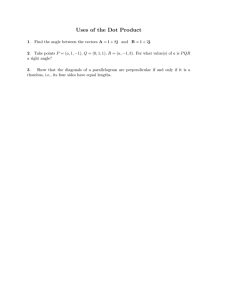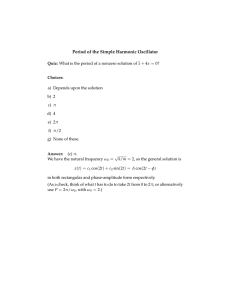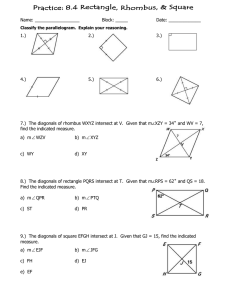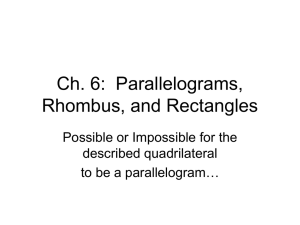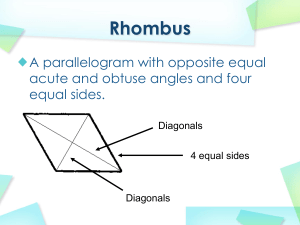Document 13739647
advertisement
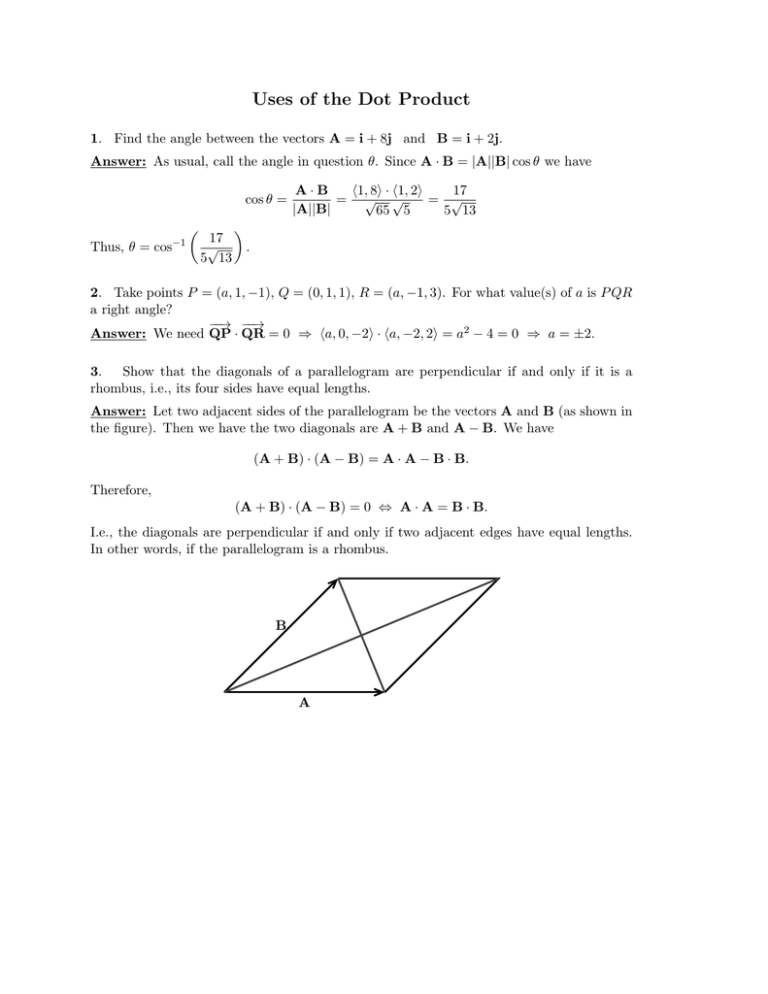
Uses of the Dot Product 1. Find the angle between the vectors A = i + 8j and B = i + 2j. Answer: As usual, call the angle in question θ. Since A · B = |A||B| cos θ we have cos θ = −1 Thus, θ = cos � 17 √ 5 13 A·B (1, 8) · (1, 2) 17 = √ √ = √ |A||B| 65 5 5 13 � . 2. Take points P = (a, 1, −1), Q = (0, 1, 1), R = (a, −1, 3). For what value(s) of a is P QR a right angle? −−→ −−→ Answer: We need QP · QR = 0 ⇒ (a, 0, −2) · (a, −2, 2) = a2 − 4 = 0 ⇒ a = ±2. 3. Show that the diagonals of a parallelogram are perpendicular if and only if it is a rhombus, i.e., its four sides have equal lengths. Answer: Let two adjacent sides of the parallelogram be the vectors A and B (as shown in the figure). Then we have the two diagonals are A + B and A − B. We have (A + B) · (A − B) = A · A − B · B. Therefore, (A + B) · (A − B) = 0 ⇔ A · A = B · B. I.e., the diagonals are perpendicular if and only if two adjacent edges have equal lengths. In other words, if the parallelogram is a rhombus. B A MIT OpenCourseWare http://ocw.mit.edu 18.02SC Multivariable Calculus Fall 2010 For information about citing these materials or our Terms of Use, visit: http://ocw.mit.edu/terms.
